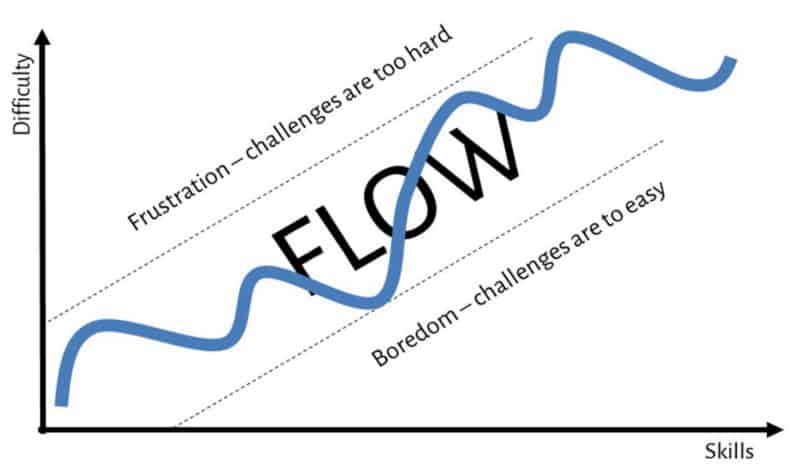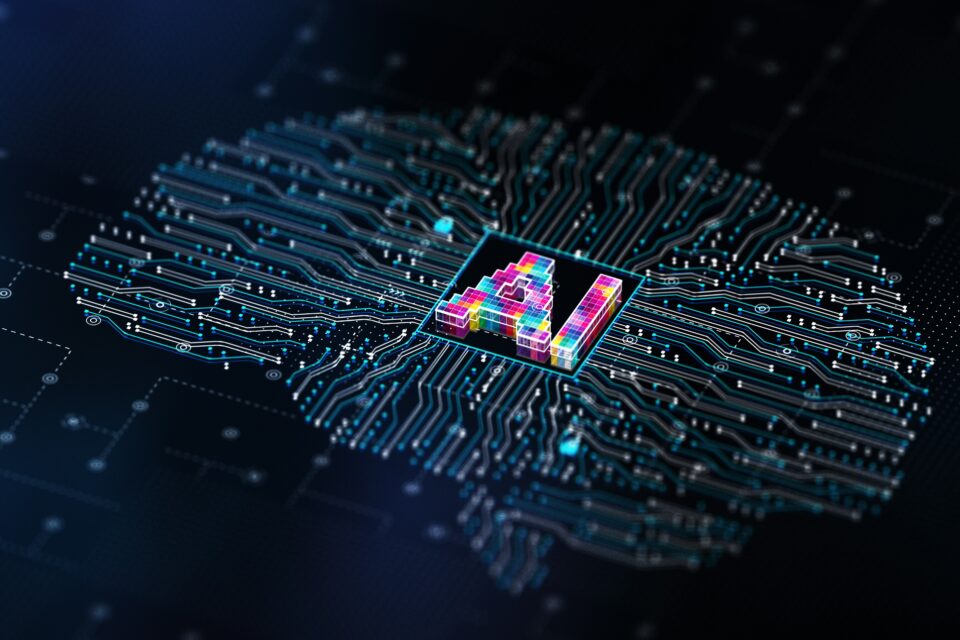
“In positive psychology, flow, also known as the zone, is the mental state of operation in which a person performing an activity is fully immersed in a feeling of energized focus, full involvement, and enjoyment in the process of the activity. In essence, flow is characterized by complete absorption in what one does, and a resulting loss in one’s sense of space and time.” — Wikipedia
I first experienced flow as a musician and I always used to call it getting into the “zone.” I would often lose sense of time and space and become completely engulfed in the music. At one of my concerts in the late 90s I was in such an intense flow state that I began to observe myself performing as if I was not in control of what I was doing.
Jam Flow
One of my fondest memories of my old band Buckle is one particular rehearsal. Our practice was especially great that afternoon and we got lost in several long improvised pieces. After, we hung out for a bit and were all about to head out to a party. But, one of my bandmates, Gary, and I were still so energized from the music that we thought we would play a bit more and maybe write some new material. Within moments of picking up my guitar again, everything vanished into the “zone.” We played until 6AM that morning. It was a blur. I vaguely remember our bandmate Heath coming back and then leaving again. He had been the party and then stopped by on his way home. We have recordings to prove it happened.
It was few years later when I started to hear this state referred to as “flow” and I bought a copy of Mihaly Csikszentmihalyi’s book on the topic. Csikszentmihalyi explains that truly enjoyable activities require effort, which initially creates slowness and frustration, but that over time, through repeated effort and increased skill, the activity becomes intrinsically rewarding.
“The flow experience, like everything else, is not “good” in an absolute sense. It is good only in that it has the potential to make life more rich, intense, and meaningful; it is good because it increases the strength and complexity of the self.” ― Mihaly Csikszentmihalyi, Flow
Flow is a complex cocktail of nuerochemicals including dopamine, norepinephrine, endorphins, anandamide, and serotonin. The most commonly produced endorphin is 100 times more powerful than medical morphine. Anandamide is an endogenous cannabinoid, and feels similar to the psychoactive effect of marijuana. Finally, when leaving flow the brain releases serotonin. With so many powerful chemicals it is easy to understand the addictive nature of flow.
“These five chemicals are flow’s mighty cocktail. Alone, each packs a punch, together a wallop.” — Steven Kotler, The Rise of Superman: Decoding the Science of Ultimate Human Performance
Code Flow
From the first day I ever wrote code, I found it to be a magical experience. I could create a set of instructions and quickly see my creation come to life. Unlike hardware or other physical tasks, software presents very few obstacles to obtaining results once you meet the basic requirements. This means that you can pull on a thread and keep creating or debugging for hours.
True flow requires mastery. However, I definitely experienced flow states in my first few months writing software. In the early days I would more easily find flow while debugging or problem solving. I would start poking and testing things and would fall down a rabbit hole. As I became more experienced I found that I could flow easily on almost any coding task.
Cynthia Maxwell, Director of iOS Engineering at Slack, uses flow to better manage her engineers. She believes that flow is a must-have and not a nice-to-have if your goal is to scale 5x. Cynthia simply asks the engineers at Slack to rate their activities on the flow diagram at the end of every one-on-one. She uses this metric to understand how to adapt the work for that engineer. How I can get you more into your work, not get more work out of you? This first round article describes her process in detail.

Losing Flow
I find it disorienting and frustrating when someone or something yanks me from flow. I am in such deep concentration that the cognitive dissonance of disruption is almost painful. Ideally, flow ends naturally and I can transition gently back to the “real world.” (Just ask my wife what it is like to interrupt me when I’m in the groove.)
As I began to take on leadership roles, I was responsible for a team, product strategy, and customer experience, but I was also still coding. With all of these responsibilities, I often had to catch up on coding responsibilities in the evening. I would start around dinner time, quickly falling into a flow state and not coming out until hours later. If I was lucky, I had taken the time to drive home before starting to code. I was almost always running on 2–4 hours of sleep. It was challenging, especially the next day when I needed to meet with clients, partners, or venders on little sleep.
Less Flow
In an effort to protect my sanity and health, I began to code less and less. In my flow states, I simply won’t stop to sleep or eat. Today, I still code, but I limit my coding to personal projects or tasks that are either time constrained or are not mission critical for the company. One of my favorite areas to contribute code, when I still can, is for Developer Experience and DevOps. I love to find ways to make the team more efficient and the work more enjoyable.
“The purpose of the flow is to keep on flowing, not looking for a peak or utopia but staying in the flow. It is not a moving up but a continuous flowing; you move up to keep the flow going. There is no possible reason for climbing except the climbing itself; it is a self-communication.”
― Mihaly Csikszentmihalyi, Flow
In conclusion, I love to flow. But, I had to decide which flow states I would allow myself to get sucked into. I consider myself lucky to have found multiple sources of flow. I’m afraid that there are many people out there who have never experienced flow in any task and that is something that would be incredible to change. I’ve personally taken on the challenge of writing more and after writing every week for over 6 months, I’m starting to find flow while writing, which excites me. I would love to hear about your experience with flow states. Please share your stories in the comments below.
Voltage Control specializes in Design Sprints, and we facilitate Sprints in Austin, Dallas, New York, San Francisco, and wherever you are! Please email Douglas at douglas@voltagecontrol.co if you are interested in having him facilitate your Sprint, coach your team on how to run an efficient Sprint, or are curious to learn more about how a Sprint might help your company or product.
If you are in or near Austin, visit us at the Austin Design Sprint Meetup. Each month we have a guest speaker share their experience participating in a Design Sprint. If you would like to be a future speaker, please email me.


